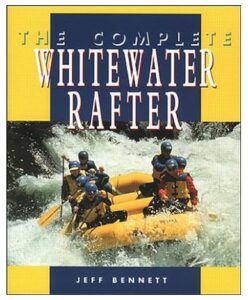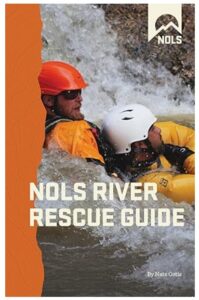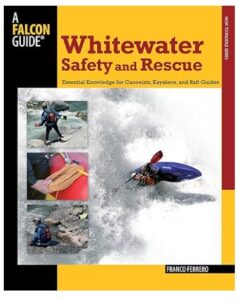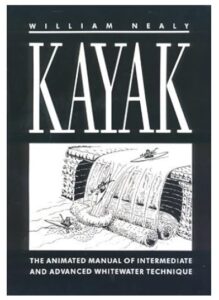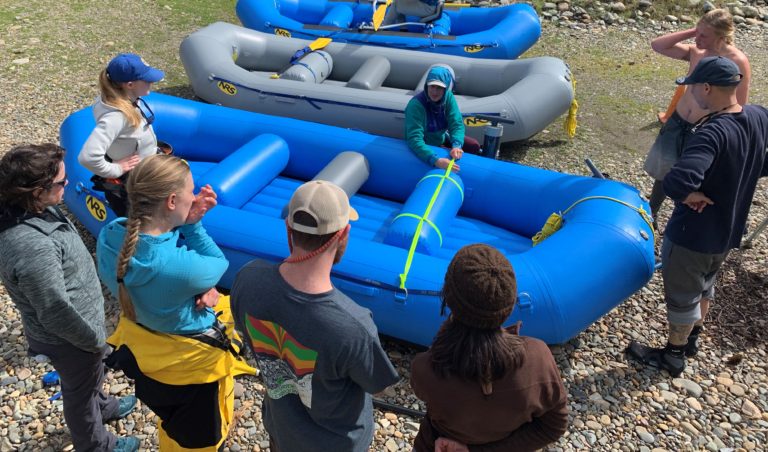Information for the 2025 Lake Tahoe Community College Whitewater Rafting Guide School in California. The course runs 8 days, typically Saturday through Saturday the last full week of March. In addition there is an online meeting on Tuesday night prior to the course. There will most likely be two more courses offered in 2025, one a week earlier and one two weeks later.
This course is designed to prepare people to seek employment as a professional rafting guide or to be competent running private rafting trips. Course registration takes place through the LTCC website.
Table of Contents:
- Class Resources: Syllabus + Gear List
- Instructional Videos + Blog Posts
- Introductory Videos – please watch the first video prior to our initial meeting
- Blog Posts with Videos – recommended to review before field course
- Additional Resources
- Instructional Books
- Meeting Locations
- General Information about Pro-Guide Schools
- Video – Applying for Rafting Jobs
Video from 2023 Rafting Guide School
Class Resources:
Outline of Safety and Paddle Talks
Short Videos about Rafting basics:
Helpful Readings (with Videos) for River Portion
Paddle Rafting Commands Article
Additional Posts
Advantages of High Flotation Lifejackets
Instructional Books
Not required but if you like traditional books here are a few favorites.
Franco’s offers another current prospective on whitewater safety and rescue. He does a nice job with his focus on preventative practices.
William Nealy’s hilarious and informative book on how to kayak. Book is also good for rafters with it’s cartoon explanations for rivers hydraulics and river running techniques.
Potential Meeting Locations:
Gear shed behind the LTCC gym. Map to meeting location behind gym.
Grocery Outlet, Placerville, Ca
Camp Lotus – Campsite on the South Fork of the American River
Alternative launch spot – Henningsen Lotus Park
Professional Rafting Guide Schools
Professional rafting guide schools are designed to prepare people to work as commercial guides. However, students typically come out of these schools needing further training. Ideally, they are competent enough to rig and row an extra raft on a multi-day trip and/or able to run a paddle boat down a class II – III whitewater day stretch with a senior guide in the boat with them. After showing they have the skills to consistently run rapids safely, guides are typically then given the opportunity to get paid work.
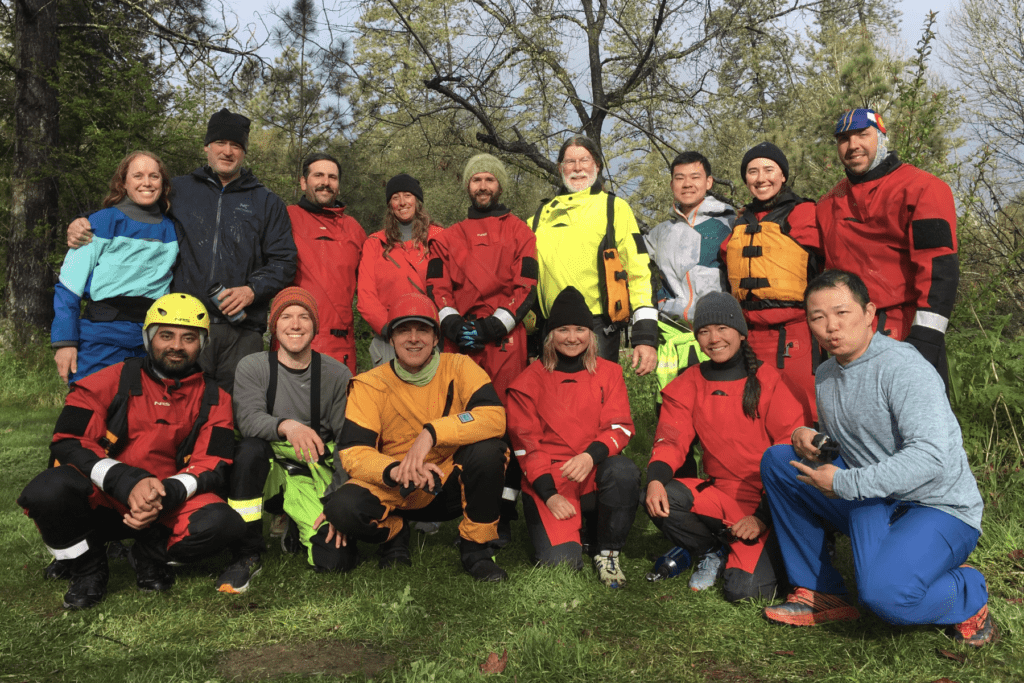
Types of Pro Rafting Guide Schools
There are many different types of rafting companies to meet the demands of a variety of rivers and guests. Most courses are run by rafting companies so they can have a pipeline of new guides to run their style of river trips.
Day Trip versus Multi-day Trip Courses
The biggest variation in pro rafting guide schools is if they focus on one-day or multi-day trips. Rafting guide schools focused on one day trips typically use paddle boats or oar/paddle combination boats (also called stern mounts). These courses tend to emphasize learning one stretch of river with the idea that at the end of the school students will be working that same section. Due to the emphasis on whitewater, these students come away with stronger paddle boat skills, team boating skills, better safety talks, and more refined paddle talks.
Multi-day trip courses cover more information. Students end the courses with a larger breadth of knowledge but less refined skills. In addition to topics covered in courses for one-day trips, these courses teach gear boat rigging and rowing, setting up river camps, cooking meals, and loading and de-rigging for these more complicated trips.
Judgement versus Policy Based Companies
There are two main types of rafting companies: judgement based and policy based. Rafting guide schools follow the culture of the company. Judgement based companies focus on building skills and then teaching guides to critically decide how to apply those skills based upon the situation. I’m a fan of judgement based training because it makes guides more adept at adjusting to the variety of conditions we see in multi-day wilderness trips.
Policy based companies also focus on building skills but they are more directive regarding the application of skills. Typically, rapids are memorized with guides being told how and where to enter a rapid and what commands to use. Safety practices such as where to have rafts waiting at the bottom of rapids are also memorized. Dam release rivers tend to have more of a focus on memorizing while free flowing rivers vary more throughout the season necessitating an ability to read whitewater.
How much will you be guiding?
The student to instructor ratio is a key part of getting more guiding time. A good ratio is 4 students per instructor. Many companies also provide solo boats to increase the amount of time students are guiding.
What is the experience of the instructors?
The best courses are led by instructors with 10+ years of experience working on different types of rivers including single and multi-day trips as well as high and low volume runs. It’s also preferred that the lead instructor has taught numerous courses.
Ideally all the instructors will have AT LEAST worked multiple seasons as a lead guide on class IV rivers. Guides who are not comfortable on class IV typically are not comfortable enough on class III to be a strong instructor. An important aspect of learning to guide is making mistakes. Instructors that are not comfortable do not allow students to make mistakes decreasing learning in the short term and inhibiting a new guide’s confidence in the long term. In the best case all your instructors would have class V guiding experience.
Class V guides typically have much more refined skills and understanding of rigging, training crews and running rivers to minimize risk. I’ve seen many guides that need to relearn skills as they progress because the initial way they learned doesn’t work on harder rivers.
What skills will you be learning?
Quality courses will cover most of the following: flipping rafts, swimming rapids, swimming into eddies, climbing into rafts, using throw bags, picking up swimmers, rigging boats, setting up camp, knots, team boating, paddle boating, rowing, and gear repair.
A note on buying gear before your course
Instructors are a wealth of knowledge. Many times it is better to wait to buy gear after taking a course. Too often I see students show up with brand new gear not ideal for the rivers we are running. For example, students will show up with a low volume lifejacket for a rafting course on high volume rivers. Their lifejacket makes swimming in the river more challenging and dangerous. See a gear list for my rafting courses.
Video: Applying for Rafting Guide Job
Some companies make you apply for a job and then select people for their guide school. The video below has tips on how to get a job as a rafting guide.
